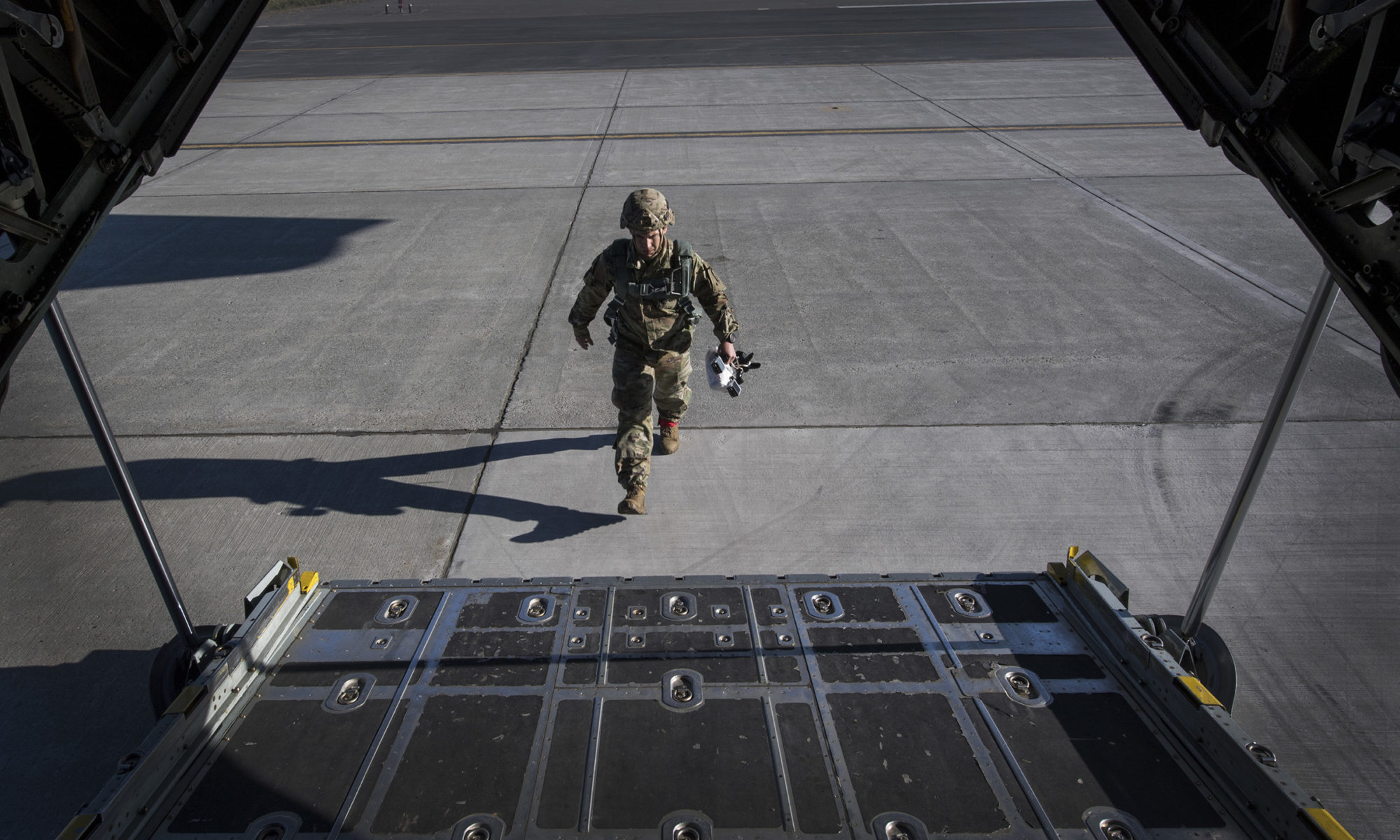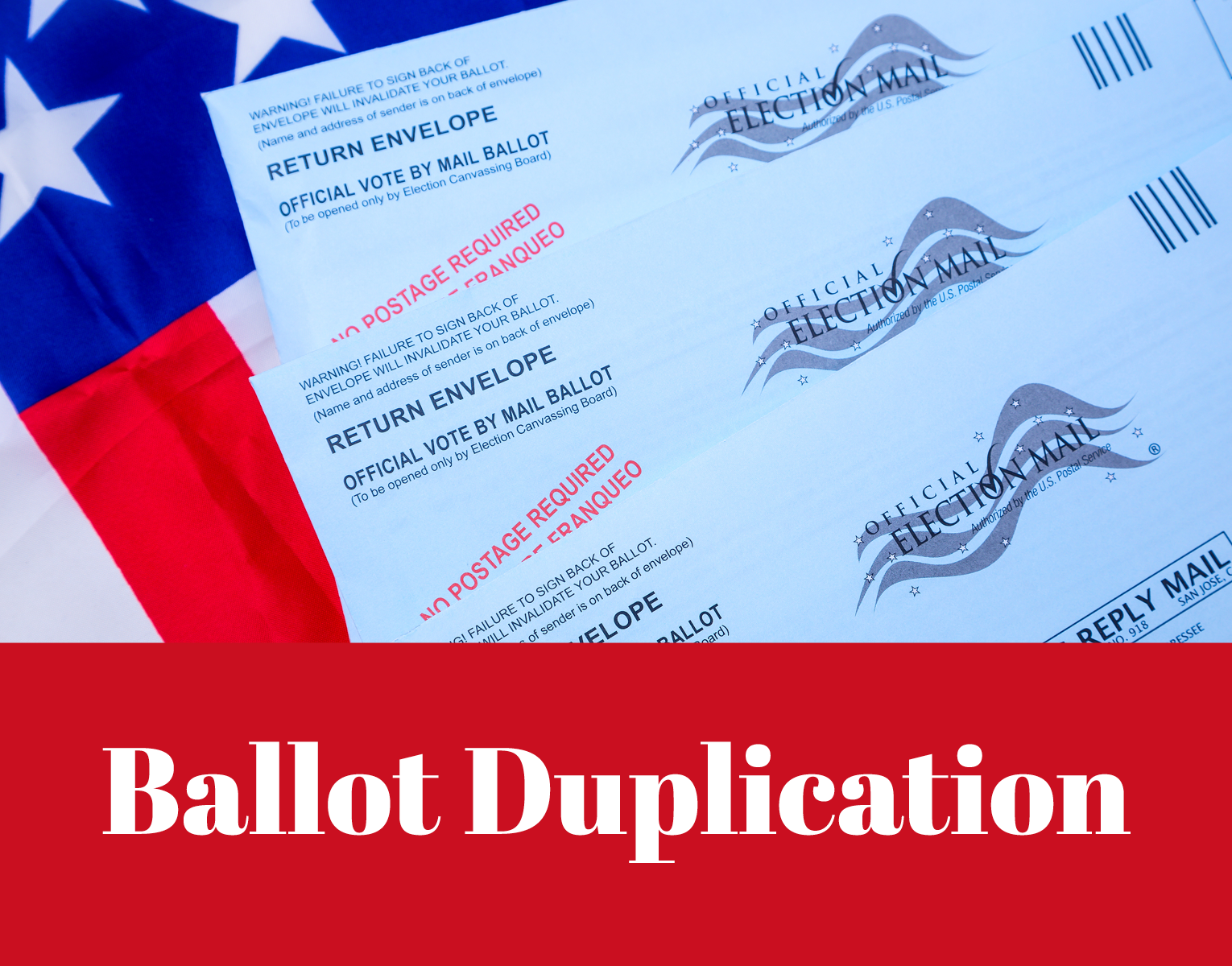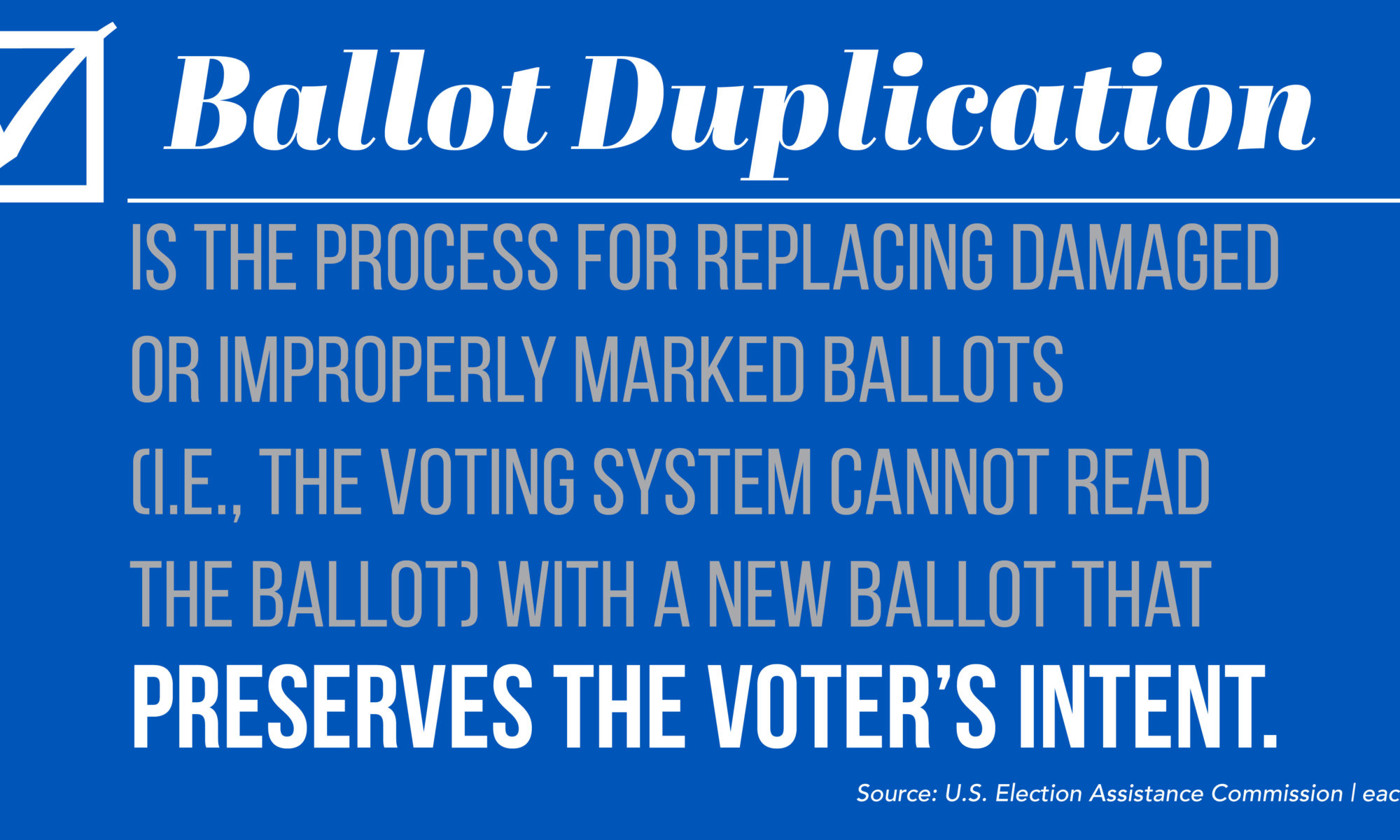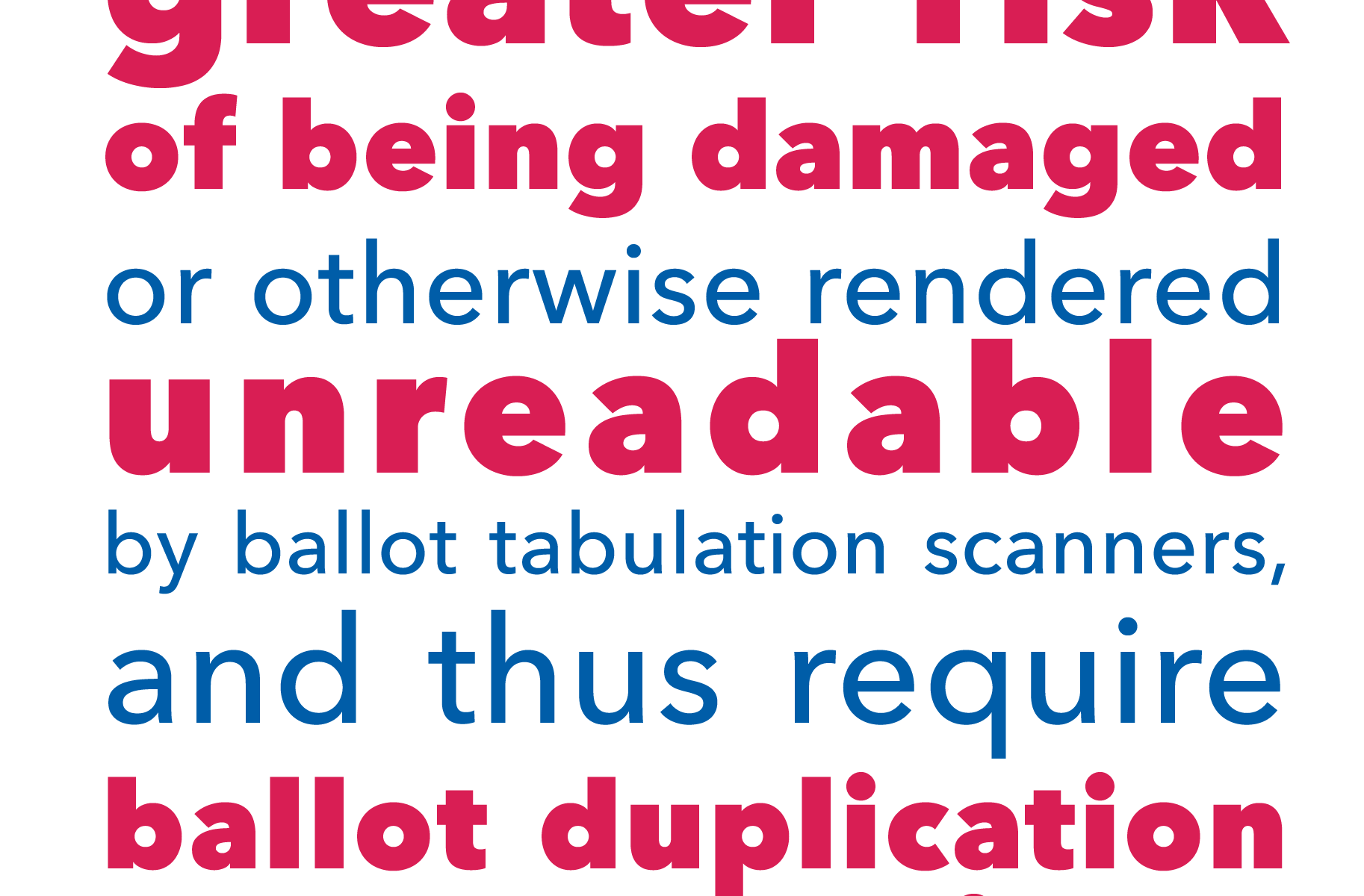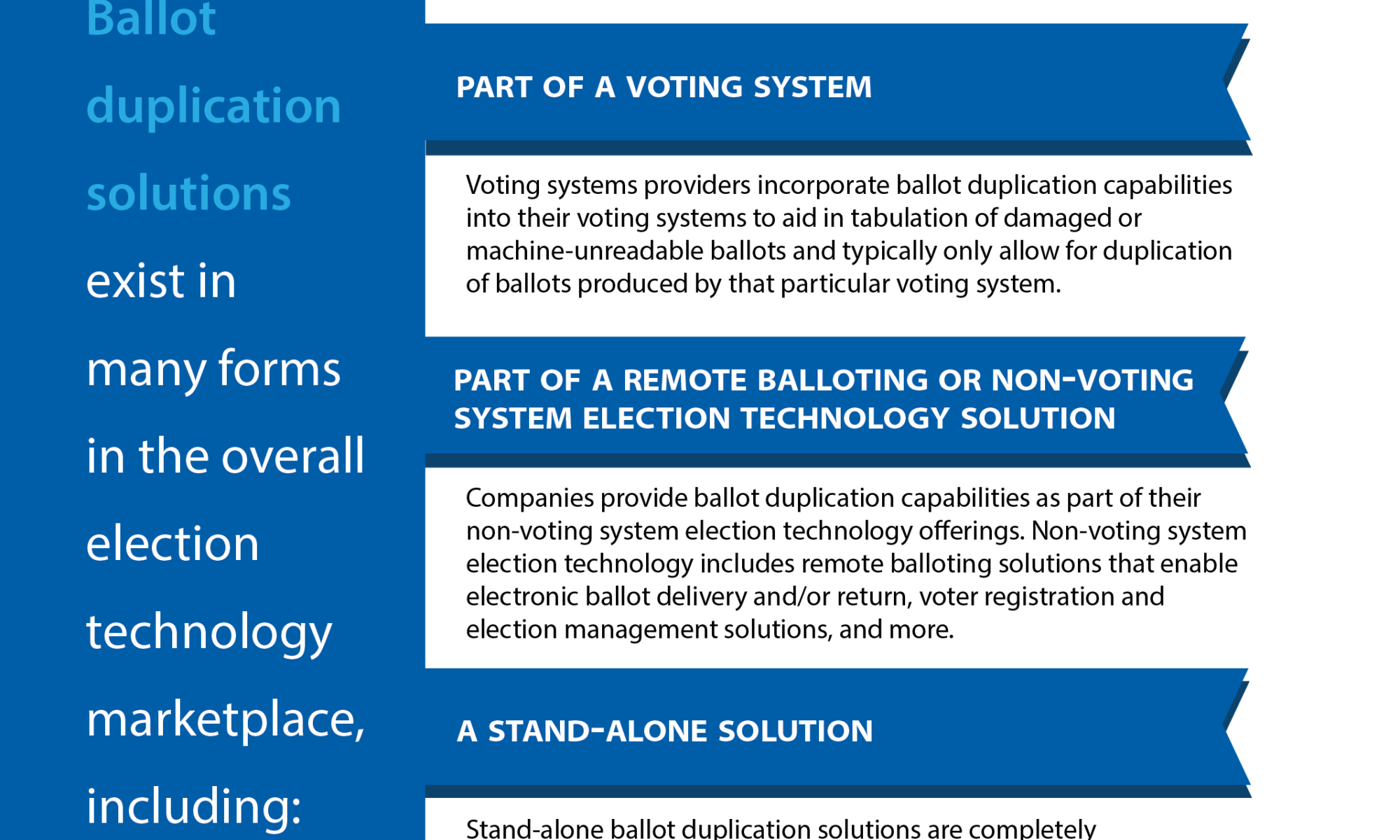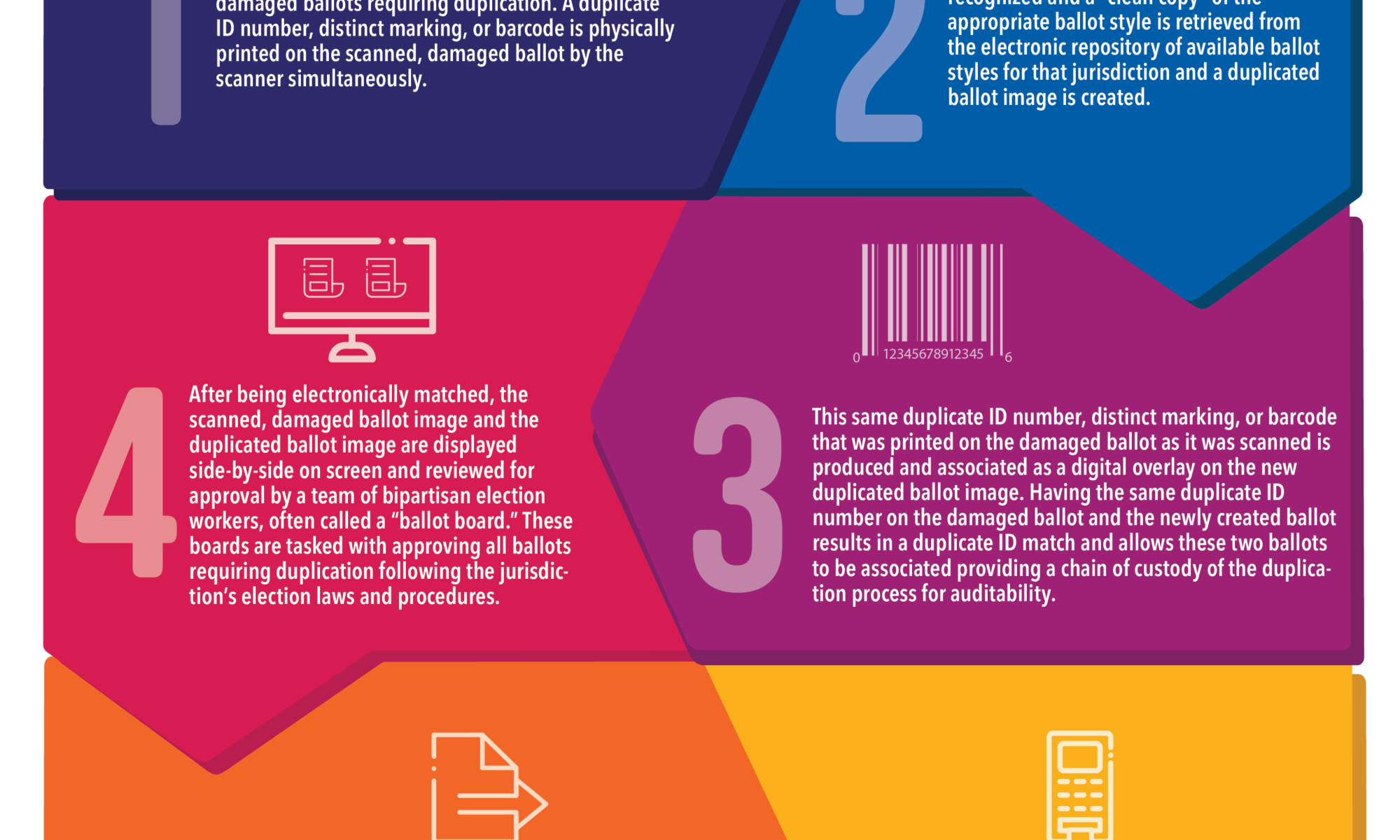Florida’s Brevard County Supervisor of Elections Highlights Remote Observation Procedures and an Improved Ballot Duplication Process During Overseas Voting Initiative Visit
Last year, members of the Overseas Voting Initiative (OVI) Working Group met in Central Florida to discuss the ongoing and emerging issues faced by Uniformed and Overseas Citizens Absentee Voting Act (UOCAVA) voters when attempting to cast their ballot. As part of this convening, Brevard County Supervisor of Elections Tim Bobanic provided working group members with a tour of his county’s warehouse in Melbourne, where his office conducts various administrative procedures, such as ballot duplication. In addition to his role with Brevard County, Bobanic is a member of the OVI working group.
OVI provides extensive programming to working group members focused on understanding and improving the voting process for military and overseas citizens. Touring election offices such as the Melbourne warehouse provides members with a behind the scenes look into how jurisdictions with large UOCAVA populations help these individuals overcome voting barriers and successfully cast their ballot.
While touring the Brevard County election facility, working group members witnessed several administrative best practices in action, including the use of live streams that allow the public to remotely observe various election processes. Members also learned about Brevard County’s use of technology solutions to streamline ballot duplication procedures and facilitate the processing of absentee and UOCAVA ballots.

On March 8, 2023, Brevard County Supervisor of Elections Tim Bobanic (second from right) guided OVI Working Group members, CSG team members and Federal Voting Assistance Program staff around the Brevard County Supervisor of Elections Melbourne warehouse. Working group members Anthony Albence of Delaware (left), Natalie Adona of Nevada County, California (second from left), and Aaron Nevarez of Los Angeles County, California (right), looked on and listened. This photo was taken by Katy Owens Hubler.
Bobanic’s role as supervisor of elections serves the voters of Titusville, Melbourne, Palm Bay and Viera, which boast a total population of just over 600,000 residents, including approximately 430,000 who are registered to vote. The Melbourne facility is one of several satellite offices throughout the county that work in tandem to ensure Brevard County elections run smoothly.
OVI working group members were joined at the modern Melbourne facility by representatives with the Federal Voting Assistance Program, including Director Scott Wiedmann. It’s there Bobanic led the group around, highlighting the location’s large warehouse and numerous office areas. As Florida’s 10th largest jurisdiction, much space is needed to conduct the county’s manual and electronically-aided election processes.
The first area shown to working group members was the public viewing area, which sits just inside the facility’s entryway. This location was chosen to provide the public, media, candidates and other interested stakeholders with easy access to the viewing area. Once inside, working group members observed two dozen monitors which broadcast various election processes in real-time for members of the public to view.
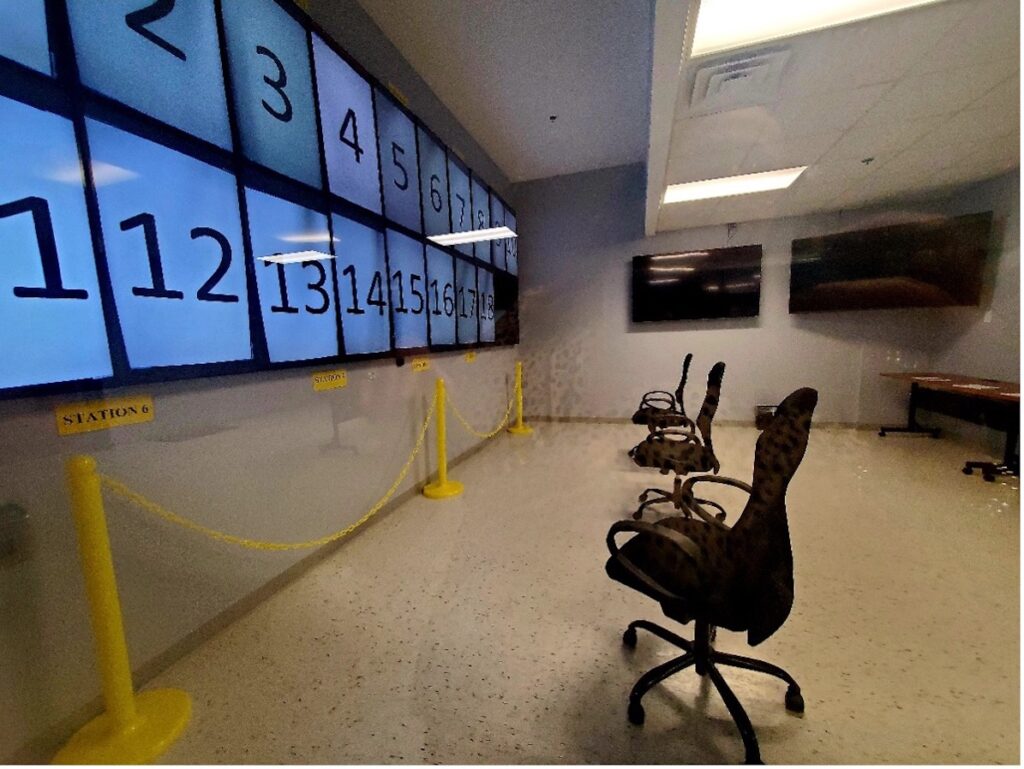
The public viewing area of the Melbourne warehouse in Brevard County, Florida, allows individuals to view the ballot duplication process and other post-election procedures on large screens. The number on each screen corresponds to a ballot duplication workstation in the facility that is equipped with a live stream camera. This photo was taken by Katy Owens Hubler on March 8, 2023.
According to Brevard County officials, the public viewing area serves to educate voters on local election processes and increase the transparency of elections, all while minimizing disruptions to the processes being viewed. While in the viewing area, spectators can ask questions and flag any concerns, but they are not physically among election workers as they move about the facility.
At the time of the OVI’s visit, ballot duplication processes throughout Brevard County were being broadcast for the public to view. Ballot duplication is the process by which a damaged or improperly marked ballot is replaced with a new, machine-readable ballot that preserves the voter’s intent. Monitors in the viewing area allowed members to observe live camera feeds of each ballot duplication work area in the county. In doing so, working group members and the public can see every ballot duplication process taking place throughout the county simultaneously.
While in the viewing area, Bobanic shared that a few months earlier, his office purchased Enhanced Remake, a ballot duplication solution offered by Enhanced Voting. Enhanced Remake is a technology solution that “easily remakes any unreadable ballots with less effort and less mistakes …” It is available as an online service or an offline software.
Brevard County purchased both the Enhanced Remake hardware and software, which functions as a self-contained, offline station. Bobanic hoped to have the software up and running for the 2022 election cycle — a goal which he and his staff accomplished. Members of the OVI working group were able to view a demonstration of Brevard County’s Enhanced Remake station while touring the Melbourne facility. A similar demonstration, offered by Enhanced Voting, can be accessed here.

Brevard County Supervisor of Elections Tim Bobanic (centered, wearing a blue shirt) stood in the ballot duplication room at his Melbourne office on March 8, 2023 explaining the county’s new ballot duplication process using new equipment from Florida-based Enhanced Voting and public display monitors. This photo was taken by Katy Owens Hubler.
Enhanced Remake is one of many technology solutions on the market that automate aspects of the ballot duplication process using a combination of software and hardware (i.e., ballot duplication devices). Regardless of the technology solution, any jurisdiction can live stream the ballot duplication process by equipping duplication workstations with cameras that broadcast a live feed to a public viewing area. Election officials can then narrate the processes being broadcast and answer questions from the public, media or other interested stakeholders.
For more information on ballot duplication, please read the OVI article series on this topic. OVI has also published an article on the remote observation of ballot duplication and other post-election processes, which is accessible here.
We thank Brevard County Supervisor of Elections Tim Bobanic and his staff for welcoming OVI to the Melbourne facility and we look forward to visiting more election offices in the coming years.
